| Early Spring Date: | April 26 |
| Late Spring Date: | May 31 |
| Best Dates to See in Spring: | May 2-28 |
Spring: When you start to see mostly Blackpoll Warblers at Monticello Park, the other warbler species have already passed through, and the spring migration is coming to an end. Some Blackpolls show up in late April, but most arrive after the middle of May. The best time to see one at the park is during the third and fourth weeks in May when they become the park's most common warbler.
Fall: Blackpoll Warblers tend to migrate late in the spring and late in the fall. Some show up in the park in September, but you are more likely to see one during the second and third weeks in October.
Where to See Them in the Park
Blackpoll Warblers sometimes stay high in the canopy, but they often come down to mid-story or below. They frequently go into the stream to bathe and drink.
Physical Description
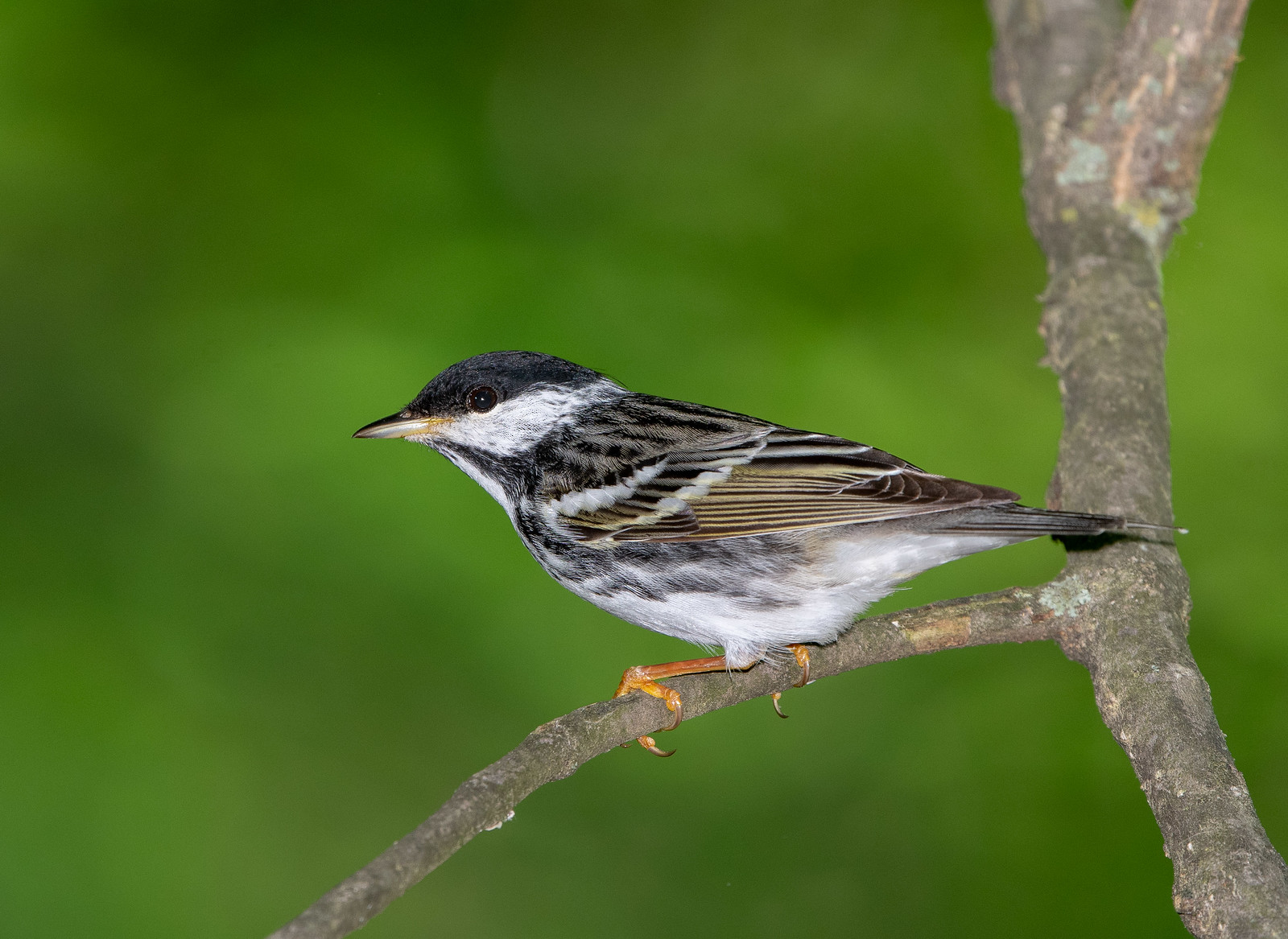
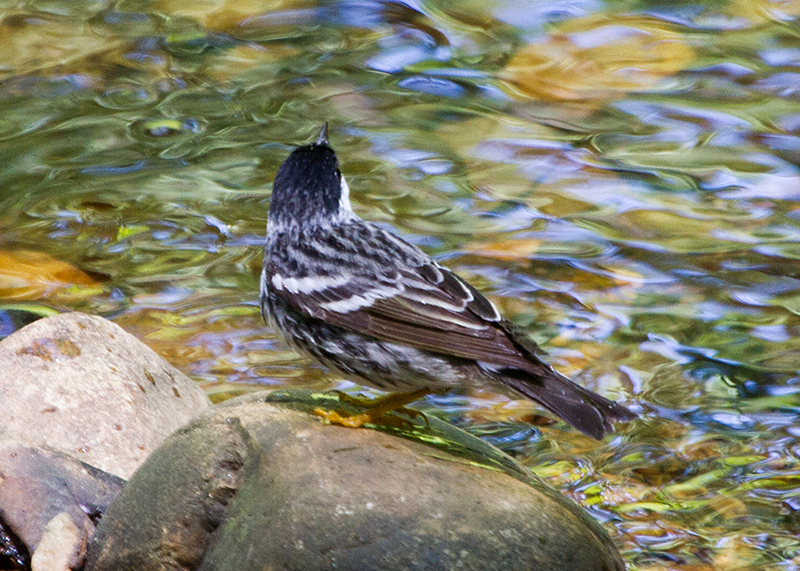
Poll means head — a poll tax is a head tax on every individual. The head of a male Blackpoll Warbler resembles a chickadee's, with a black cap and white cheeks. He has heavy streaks on his back and flanks. He has two white wingbars, and his wing feathers have yellow edges. The edges stand out on this mostly black-and-white bird. Blackpolls are large warblers with long yellow legs that also stand out. The leg color, which is a key fieldmark, can be surprisingly easy to see.
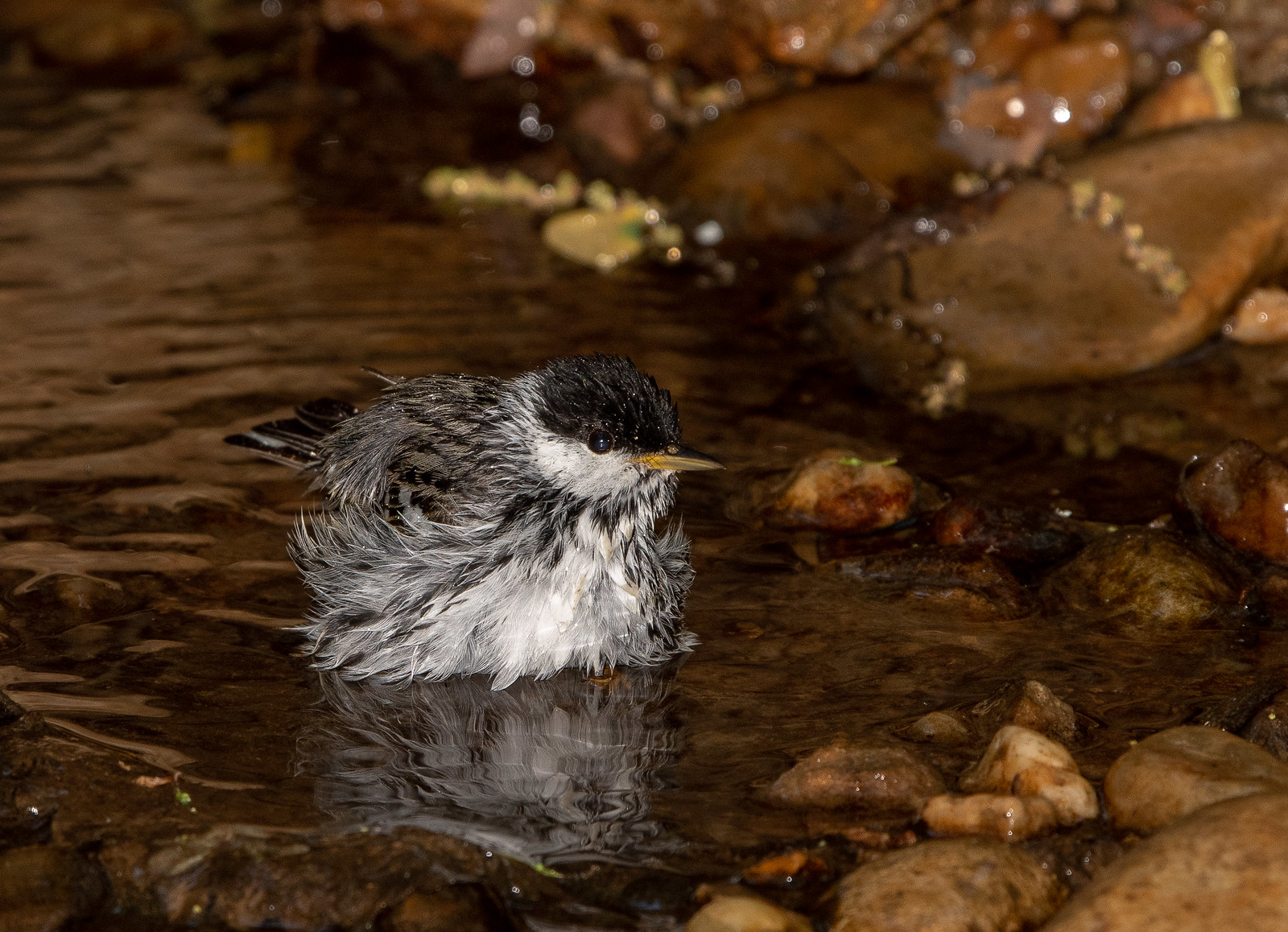
Blackpolls often take long baths. Even when the bird is fluffed out and partially submerged, the black cap and white cheeks make the male Blackpoll easy to identify.
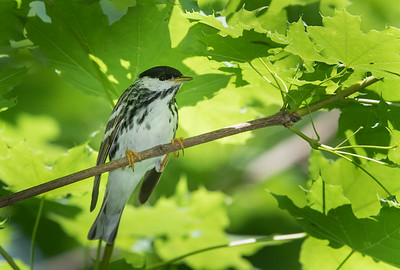
When a male is high in a tree and facing you, the black cap might not stand out. The plumage on the flanks comes to a point under the bill, which is similar to the plumage on the underside of an adult male Black-and-white Warbler. The black on the Blackpoll's flanks appears to come to a point at the chin. The Black-and-white is smaller, and it does not have bright yellow legs.
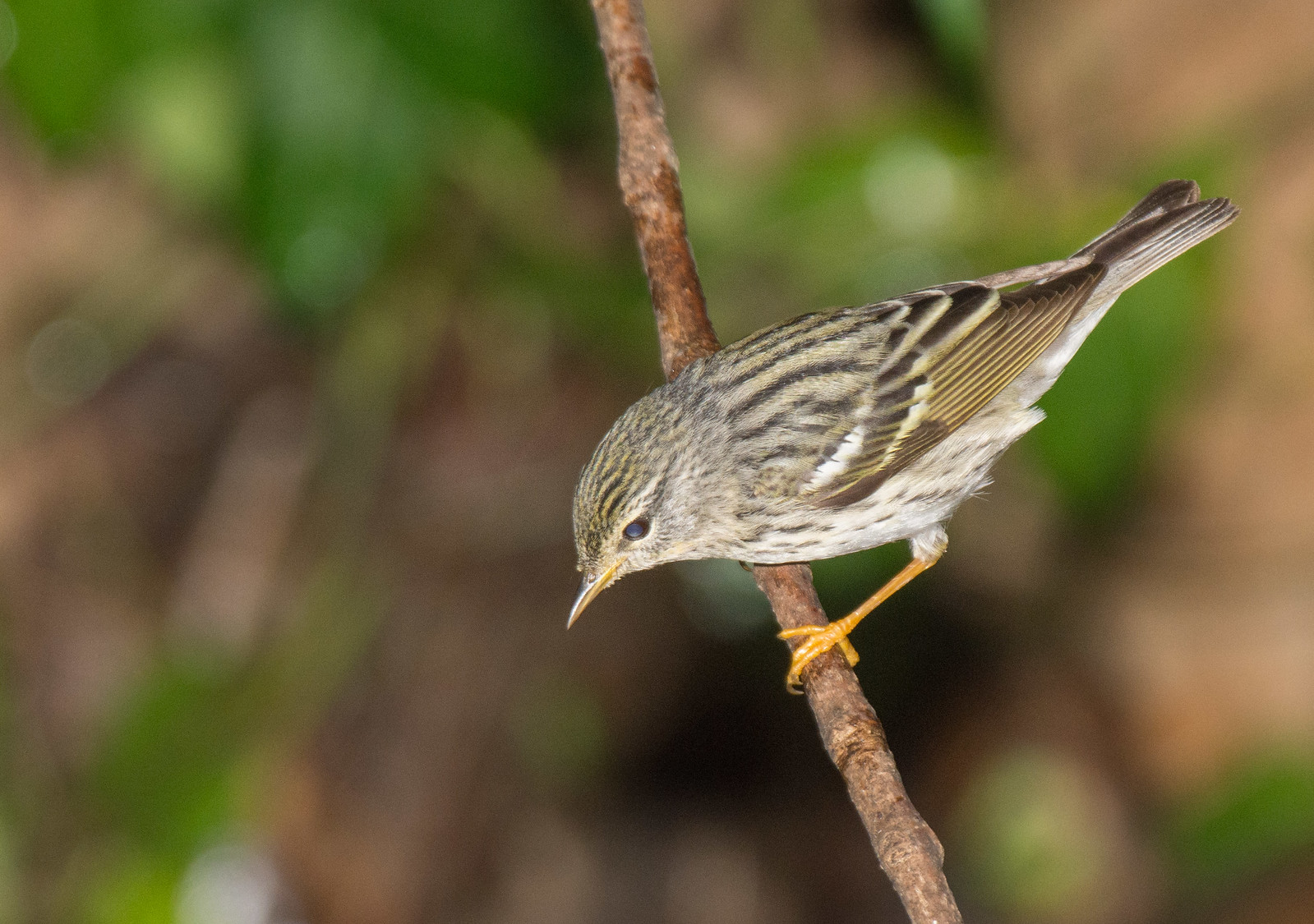
The females are not as easy to identify. They have wingbars, and the yellow edges to their wings do not stand out as much as on the male. They have an olive cap and white eye crescents. The streaking on the flanks is much less bold, but the yellow legs still stand out. They look a lot like female and young Bay-breasted Warblers.
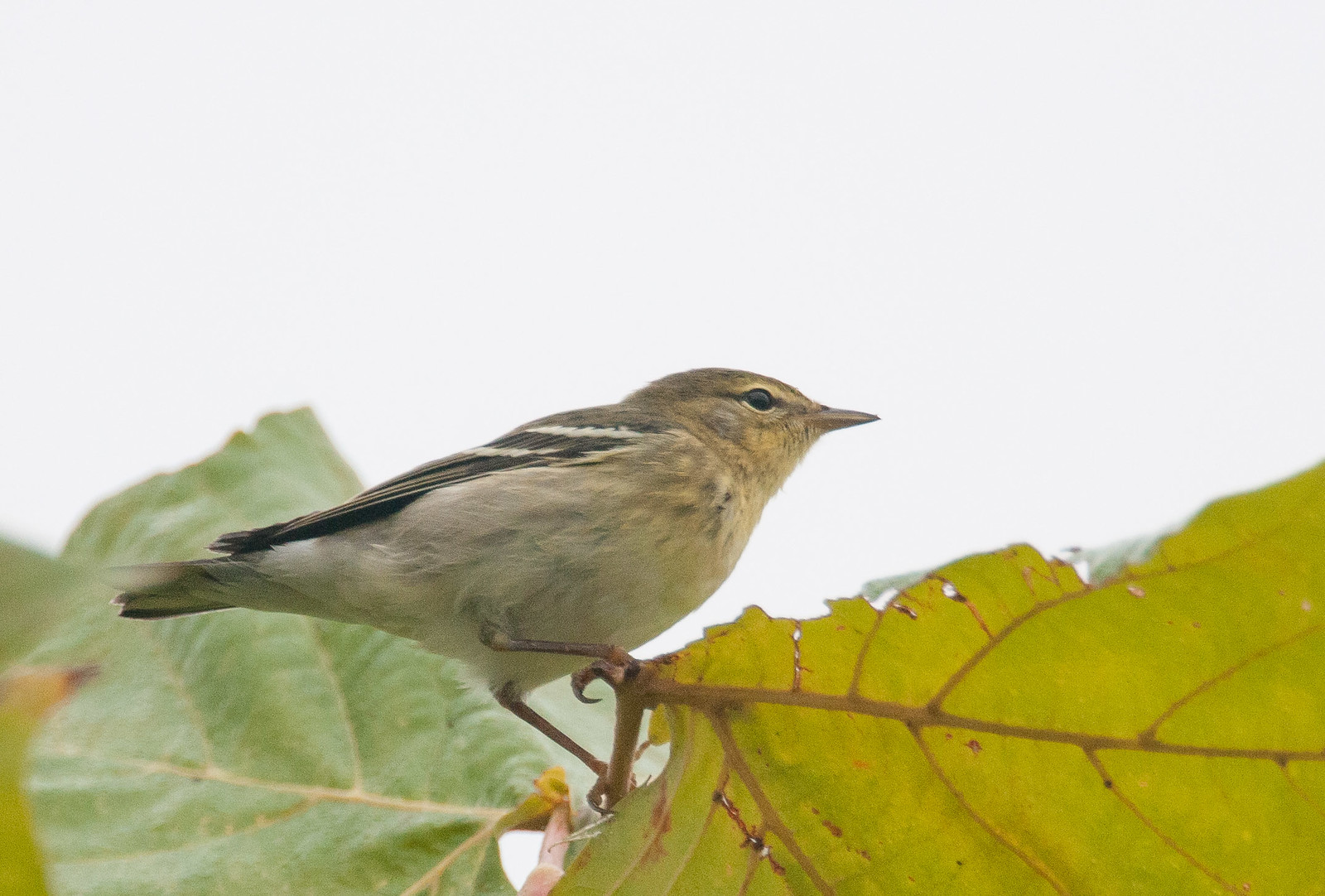
Fall: Fall male and female Blackpolls look alike, and they closely resemble Bay-breasted Warblers. Fall Blackpolls usually have some streaking on the flanks, while the Bay-breasted does not. The Blackpoll's undertail is white, while the undertail of the Bay-breasted is usually (but not always) buffy. The Blackpoll's yellow legs can also be important in differentiating the two species. Some adult fall male Blackpolls show a lot of streaking.
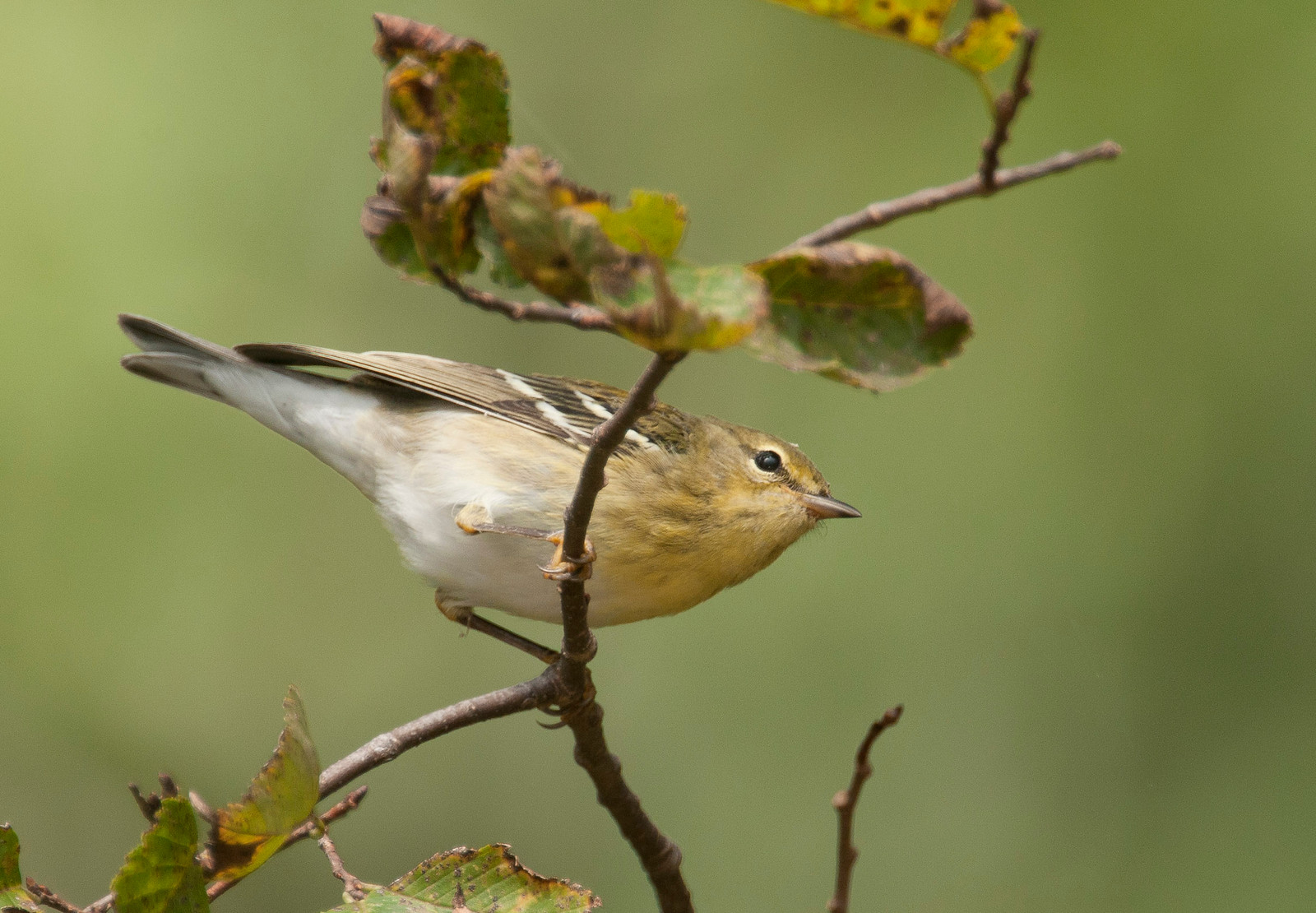
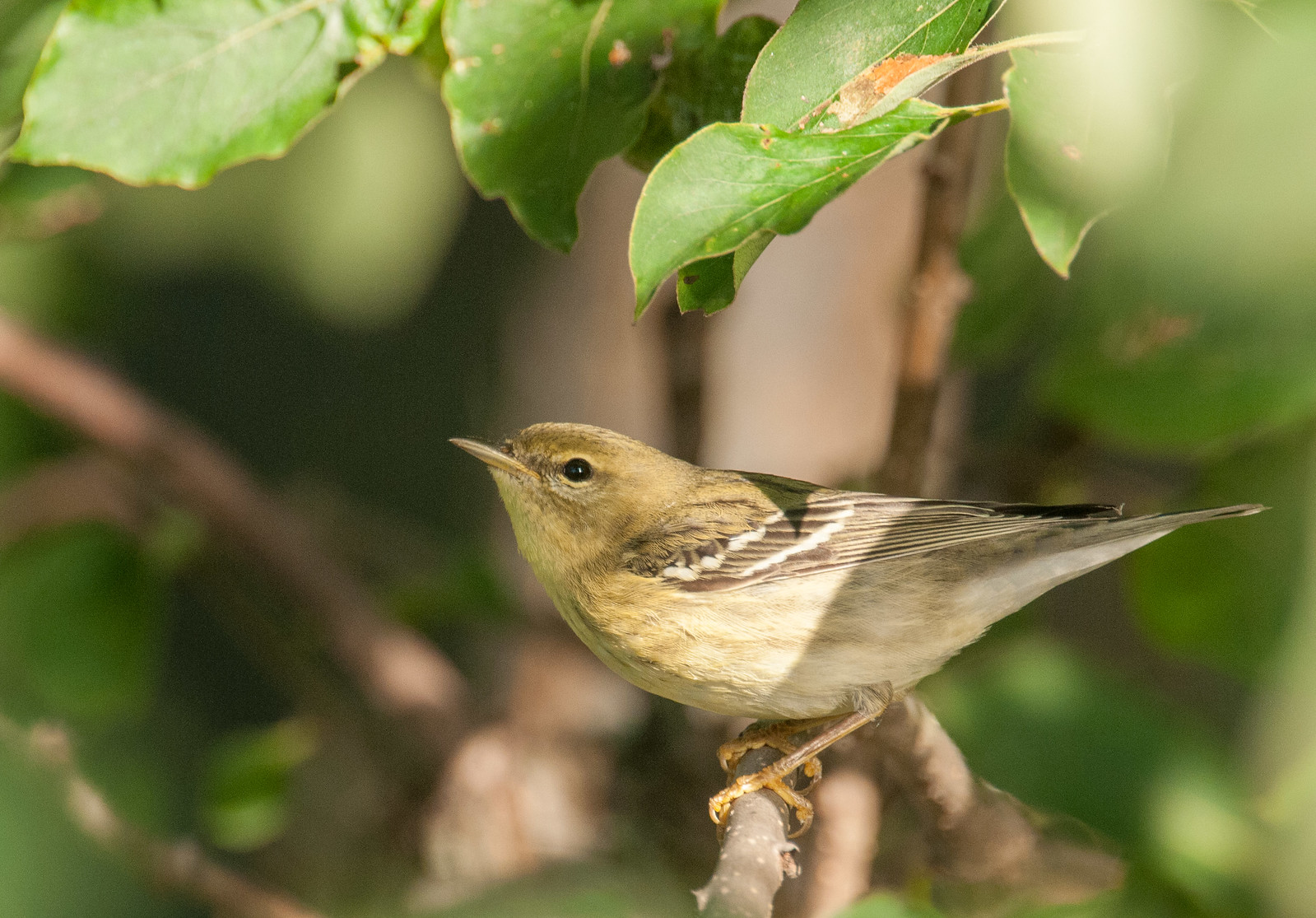
Fall first-year Blackpoll Warblers look more olive than fall adults. They have white undertail coverts.
Vocalizations
The song of the Blackpoll Warbler sounds like tinkling wind chimes. It is so high-pitched that it is difficult to record without distortion.
Hear the song of the Blackpoll Warbler.Notes
Blackpoll Warblers have a long and extraordinary migration — one of the longest of any songbird in the world. They winter in South America, and most nest in northern Canada and Alaska. Their preferred nesting habitat is northern coniferous forests.
Origin of Names
Common Names: Blackpoll means black head. The New World Warblers were named for their similar appearance to European warblers, to whom they are not related. Most of the New World warblers do not warble (sing continuously with notes that change frequently).
Genus Name: Setophaga means moth eating.
Species Name: Striata means striped, from the streaks on the plumage.
Blackpoll Warbler video footage
Return to the Index
